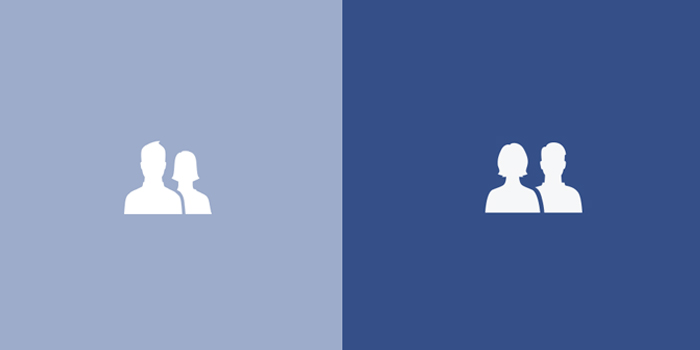After its logo redesign last week, Facebook is looking to join the march towards gender equality with a female-centric change to its friends icon. The difference is so subtle, most people probably haven’t even noticed it.
The friends icon (found in the upper right corner of Facebook, in case you’re blanking out) has always featured a man’s silhouette in front of a smaller woman who’s missing half a shoulder. Now both gender representations are almost equally sized, with the woman in front having a complete set of shoulders and the man missing an arm.

You can thank Facebook design manager Caitlin Winner for initiating the shake-up. In a post on Medium, she detailed the process of how this came about. Winner noticed the original design had the female’s silhouette with a chip on her shoulder, while the male’s was symmetrical. She took it upon herself to change that and also modified their hairstyle along the way.
The friends icon isn’t the only thing Winner altered. She also put a woman in front of two males in the group icon, modified from when it was a man ahead of a male and female. Lastly, her designs will be used for those actions requiring a single figure, such as the ‘add friend’ icon. Previously, those symbols only featured a man. Now it will change according to the appropriate gender.
Facebook was in the news last year for the perceived gender inequality in its global workforce. A 2014 company diversity report revealed that over 69% of its employees were male. The disparity was even greater among senior management and tech, at 77% and 85% respectively. A 2015 update shows little progress, with the percentage now at 68% (overall), 77% (senior-level) and 84% (tech).
Updating its friends icon is a step in the right direction for Facebook. While it’s more of a symbolic victory rather than something capable of initiating change, the social media giant is used by millions of users globally. The symbols they see should reflect the reality of the current world, rather than an antiquated notion of men being the standard representation of all human beings.
